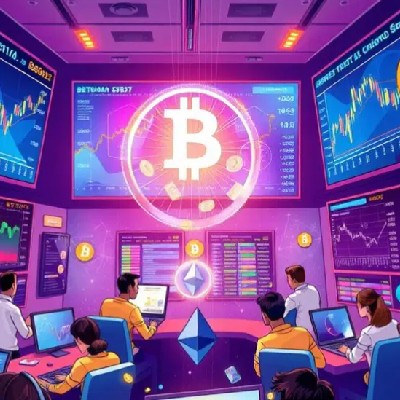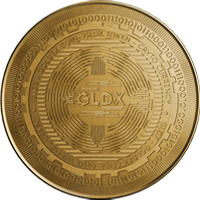Bitget: Top 4 in global daily trading volume!
Please also display BTC in AR62.67%
New listings on Bitget : Pi Network
BTC/USDT$84213.00 (-1.22%)Fear at Greed Index45(Neutral)
Altcoin season index:0(Bitcoin season)
Coins listed in Pre-MarketPAWS,WCTTotal spot Bitcoin ETF netflow -$1M (1D); -$872.6M (7D).Welcome gift package para sa mga bagong user na nagkakahalaga ng 6200 USDT.Claim now
Trade anumang oras, kahit saan gamit ang Bitget app. I-download ngayon
Bitget: Top 4 in global daily trading volume!
Please also display BTC in AR62.67%
New listings on Bitget : Pi Network
BTC/USDT$84213.00 (-1.22%)Fear at Greed Index45(Neutral)
Altcoin season index:0(Bitcoin season)
Coins listed in Pre-MarketPAWS,WCTTotal spot Bitcoin ETF netflow -$1M (1D); -$872.6M (7D).Welcome gift package para sa mga bagong user na nagkakahalaga ng 6200 USDT.Claim now
Trade anumang oras, kahit saan gamit ang Bitget app. I-download ngayon
Bitget: Top 4 in global daily trading volume!
Please also display BTC in AR62.67%
New listings on Bitget : Pi Network
BTC/USDT$84213.00 (-1.22%)Fear at Greed Index45(Neutral)
Altcoin season index:0(Bitcoin season)
Coins listed in Pre-MarketPAWS,WCTTotal spot Bitcoin ETF netflow -$1M (1D); -$872.6M (7D).Welcome gift package para sa mga bagong user na nagkakahalaga ng 6200 USDT.Claim now
Trade anumang oras, kahit saan gamit ang Bitget app. I-download ngayon



Chat AI presyoAI
Hindi naka-list
Quote pera:
PHP
Kinukuha ang data mula sa mga third-party na provider. Ang pahinang ito at ang impormasyong ibinigay ay hindi nag-eendorso ng anumang partikular na cryptocurrency. Gustong i-trade ang mga nakalistang barya? Click here
₱0.004877-2.10%1D
Price
Chat AI price chart (AI/PHP)
Last updated as of 2025-04-13 20:29:30(UTC+0)
Market cap:--
Ganap na diluted market cap:--
Volume (24h):--
24h volume / market cap:0.00%
24h high:₱0.004981
24h low:₱0.004459
All-time high:₱47.13
All-time low:₱0.{4}1604
Umiikot na Supply:-- AI
Total supply:
100,000,000AI
Rate ng sirkulasyon:0.00%
Max supply:
100,000,000AI
Price in BTC:0.{8}1012 BTC
Price in ETH:0.{7}5293 ETH
Price at BTC market cap:
--
Price at ETH market cap:
--
Mga kontrata:
0xa89B...9AD7D80(BNB Smart Chain (BEP20))
Higit pa
Ano ang nararamdaman mo tungkol sa Chat AI ngayon?
Tandaan: Ang impormasyong ito ay para sa sanggunian lamang.
Chat AI price today in PHP
Ang live Chat AI presyo ngayon ay ₱0.004877 PHP, na may kasalukuyang market cap na ₱0.00. Ang Chat AI bumaba ang presyo ng 2.10% sa huling 24 na oras, at ang 24 na oras na trading volume ay ₱0.00. Ang AI/PHP (Chat AI sa PHP) ang rate ng conversion ay ina-update sa real time.
Chat AI price history (PHP)
Ang presyo ng Chat AI ay -79.18% sa nakalipas na taon. Ang pinakamataas na presyo ng sa PHP noong nakaraang taon ay ₱0.7258 at ang pinakamababang presyo ng sa PHP noong nakaraang taon ay ₱0.{4}1604.
TimePrice change (%) Lowest price
Lowest price Highest price
Highest price 
 Lowest price
Lowest price Highest price
Highest price 
24h-2.10%₱0.004459₱0.004981
7d+3.40%₱0.004387₱0.006095
30d+319.01%₱0.001020₱0.03867
90d-62.95%₱0.{4}1604₱0.03867
1y-79.18%₱0.{4}1604₱0.7258
All-time-98.25%₱0.{4}1604(2025-02-17, 56 araw ang nakalipas )₱47.13(2023-03-14, 2 taon na ang nakalipas )
Ano ang pinakamataas na presyo ng Chat AI?
Ang all-time high (ATH) na presyo ng Chat AI sa PHP ay ₱47.13, naitala sa 2023-03-14. Kung ikukumpara sa Chat AI ATH, ang kasalukuyang presyo ng Chat AI ay pababa ng 99.99%.
Ano ang pinakamababang presyo ng Chat AI?
Ang all-time low (ATL) na presyo ng Chat AI sa PHP ay ₱0.{4}1604, naitala sa 2025-02-17. Kung ikukumpara sa Chat AI ATL, ang kasalukuyang presyo ng Chat AI ay up ng 30305.54%.
Bitcoin price prediction
Ano ang magiging presyo ng AI sa 2026?
Batay sa makasaysayang modelo ng hula sa pagganap ng presyo ni AI, ang presyo ng AI ay inaasahang aabot sa ₱0.006633 sa 2026.
Ano ang magiging presyo ng AI sa 2031?
Sa 2031, ang presyo ng AI ay inaasahang tataas ng +3.00%. Sa pagtatapos ng 2031, ang presyo ng AI ay inaasahang aabot sa ₱0.01235, na may pinagsama-samang ROI na +147.96%.
FAQ
Ano ang kasalukuyang presyo ng Chat AI?
Ang live na presyo ng Chat AI ay ₱0 bawat (AI/PHP) na may kasalukuyang market cap na ₱0 PHP. Chat AIAng halaga ni ay dumaranas ng madalas na pagbabago-bago dahil sa patuloy na 24/7 na aktibidad sa market ng crypto. Chat AIAng kasalukuyang presyo ni sa real-time at ang makasaysayang data nito ay available sa Bitget.
Ano ang 24 na oras na dami ng trading ng Chat AI?
Sa nakalipas na 24 na oras, ang dami ng trading ng Chat AI ay ₱0.00.
Ano ang all-time high ng Chat AI?
Ang all-time high ng Chat AI ay ₱47.13. Ang pinakamataas na presyong ito sa lahat ng oras ay ang pinakamataas na presyo para sa Chat AI mula noong inilunsad ito.
Maaari ba akong bumili ng Chat AI sa Bitget?
Oo, ang Chat AI ay kasalukuyang magagamit sa sentralisadong palitan ng Bitget. Para sa mas detalyadong mga tagubilin, tingnan ang aming kapaki-pakinabang na gabay na Paano bumili ng .
Maaari ba akong makakuha ng matatag na kita mula sa investing sa Chat AI?
Siyempre, nagbibigay ang Bitget ng estratehikong platform ng trading, na may mga matatalinong bot sa pangangalakal upang i-automate ang iyong mga pangangalakal at kumita ng kita.
Saan ako makakabili ng Chat AI na may pinakamababang bayad?
Ikinalulugod naming ipahayag na ang estratehikong platform ng trading ay magagamit na ngayon sa Bitget exchange. Nag-ooffer ang Bitget ng nangunguna sa industriya ng mga trading fee at depth upang matiyak ang kumikitang pamumuhunan para sa mga trader.
Chat AI holdings by concentration
Whales
Investors
Retail
Chat AI addresses by time held
Holders
Cruisers
Traders
Live coinInfo.name (12) price chart

Global Chat AI prices
Magkano ang Chat AI nagkakahalaga ngayon sa ibang mga pera? Last updated: 2025-04-13 20:29:30(UTC+0)
AI To MXN
Mexican Peso
$0AI To GTQGuatemalan Quetzal
Q0AI To CLPChilean Peso
$0.08AI To UGXUgandan Shilling
Sh0.31AI To HNLHonduran Lempira
L0AI To ZARSouth African Rand
R0AI To TNDTunisian Dinar
د.ت0AI To IQDIraqi Dinar
ع.د0.11AI To TWDNew Taiwan Dollar
NT$0AI To RSDSerbian Dinar
дин.0.01AI To DOPDominican Peso
$0.01AI To MYRMalaysian Ringgit
RM0AI To GELGeorgian Lari
₾0AI To UYUUruguayan Peso
$0AI To MADMoroccan Dirham
د.م.0AI To AZNAzerbaijani Manat
₼0AI To OMROmani Rial
ر.ع.0AI To KESKenyan Shilling
Sh0.01AI To SEKSwedish Krona
kr0AI To UAHUkrainian Hryvnia
₴0- 1
- 2
- 3
- 4
- 5
New listings on Bitget
New listings
Buy more
Saan ako makakabili ng crypto?
Bumili ng crypto sa Bitget app
Mag-sign up sa loob ng ilang minuto upang bumili ng crypto sa pamamagitan ng credit card o bank transfer.
Seksyon ng video — mabilis na pag-verify, mabilis na pangangalakal

Paano kumpletuhin ang pag-verify ng pagkakakilanlan sa Bitget at protektahan ang iyong sarili mula sa panloloko
1. Mag-log in sa iyong Bitget account.
2. Kung bago ka sa Bitget, panoorin ang aming tutorial kung paano gumawa ng account.
3. Mag-hover sa icon ng iyong profile, mag-click sa "Hindi Na-verify", at pindutin ang "I-verify".
4. Piliin ang iyong nagbigay ng bansa o rehiyon at uri ng ID, at sundin ang mga tagubilin.
5. Piliin ang “Mobile Verification” o “PC” batay sa iyong kagustuhan.
6. Ilagay ang iyong mga detalye, magsumite ng kopya ng iyong ID, at mag-selfie.
7. Isumite ang iyong aplikasyon, at voila, nakumpleto mo na ang pagpapatunay ng pagkakakilanlan!
Ang mga investment sa Cryptocurrency, kabilang ang pagbili ng Chat AI online sa pamamagitan ng Bitget, ay napapailalim sa market risk. Nagbibigay ang Bitget ng madali at convenient paraan para makabili ka ng Chat AI, at sinusubukan namin ang aming makakaya upang ganap na ipaalam sa aming mga user ang tungkol sa bawat cryptocurrency na i-eooffer namin sa exchange. Gayunpaman, hindi kami mananagot para sa mga resulta na maaaring lumabas mula sa iyong pagbili ng Chat AI. Ang page na ito at anumang impormasyong kasama ay hindi isang pag-endorso ng anumang partikular na cryptocurrency.
Chat AI na mga rating
Mga average na rating mula sa komunidad
4.6
Ang nilalamang ito ay para sa mga layuning pang-impormasyon lamang.
Bitget Insights

Crypto_Inside
4d
Crypto; what is liquidity. 🤔
In the context of cryptocurrency, liquidity refers to the ability to buy or sell a digital asset quickly and at a stable price.
What is Liquidity?
1. Market Depth: Liquidity is a measure of the market depth, which is the number of buyers and sellers in a market.
2. Trading Volume: Liquidity is also related to the trading volume, which is the amount of a digital asset being traded.
3. Price Stability: A liquid market is characterized by stable prices, with minimal price movements.
Importance of Liquidity
1. Easy Buying and Selling: Liquidity makes it easier to buy and sell digital assets.
2. Reduced Volatility: A liquid market tends to be less volatile, with smaller price swings.
3. Increased Investor Confidence: Liquidity can increase investor confidence, as it indicates a healthy and active market.
Factors Affecting Liquidity
1. Market Capitalization: The market capitalization of a digital asset can affect its liquidity.
2. Trading Volume: The trading volume of a digital asset can impact its liquidity.
3. Number of Exchanges: The number of exchanges listing a digital asset can also affect its liquidity.
Consequences of Low Liquidity
1. Price Volatility: Low liquidity can lead to significant price movements.
2. Difficulty Buying or Selling: Low liquidity can make it challenging to buy or sell digital assets.
3. Increased Risk: Low liquidity can increase the risk of market manipulation.
Improving Liquidity
1. Increasing Trading Volume: Increasing trading volume can improve liquidity.
2. Listing on More Exchanges: Listing a digital asset on more exchanges can increase its liquidity.
3. Market Making: Market making, where a third party provides liquidity to a market, can also improve liquidity.
@Crypto_inside
Thank you...🙂
$BTC $ETH $SOL $PI $AI $PUMP $PARTI $SOON $FARTCOIN $BROCCOLI $BUBB $TUT $BGSC $JELLYJELLY $TSTBSC $CEC $T2T2 $ZZZ $ASI $ARC
ASI-3.67%
BTC-1.21%

Crypto_Inside
4d
$ETH short term Technical Analysis :-
current price- $1,454.83
Support and Resistance Levels:
Support: Immediate support is observed around $1,410.
Resistance: Key resistance levels are identified at $1,520.
Market Sentiment:
The overall sentiment remains cautious, with ETH facing strong resistance and exhibiting bearish indicators.
$ETH follow for more updates...🙂
$BTC $ETH $SOL $PI $AI $PUMP $PARTI $SOON $FARTCOIN $BROCCOLI $BUBB $TUT $BGSC $JELLYJELLY $TSTBSC $CEC $T2T2 $ZZZ $ASI $MGT $PI
ASI-3.67%
BTC-1.21%

Crypto_Inside
2025/04/05 06:51
Crypto; what is Layer 2. 🤔
Layer 2 in crypto refers to a secondary framework or protocol built on top of a blockchain (Layer 1) to improve its scalability, efficiency, and usability.
Layer 2 Solutions:
1. State Channels: Enable multiple transactions to be processed off-chain, with only the final result being recorded on the blockchain.
2. Sidechains: Allow assets to be transferred between different blockchains, enabling interoperability.
3. Payment Channels: Enable fast and cheap transactions by creating a dedicated channel for payments.
4. Rollups: Bundle multiple transactions into a single transaction, reducing the load on the main blockchain.
Benefits of Layer 2:
1. Increased Scalability: Enables more transactions to be processed, improving the overall capacity of the blockchain.
2. Faster Transaction Times: Reduces the time it takes for transactions to be confirmed, making the blockchain more usable.
3. Lower Fees: Decreases the fees associated with transactions, making the blockchain more cost-effective.
Examples of Layer 2 Solutions:
1. Bitcoin's Lightning Network: A payment channel solution that enables fast and cheap transactions.
2. Ethereum's Optimism: A rollup solution that bundles multiple transactions into a single transaction.
3. Polygon's PoS Chain: A sidechain solution that enables interoperability between different blockchains.
How Layer 2 Works:
1. Transaction Processing: Transactions are processed off-chain or on a secondary chain.
2. Data Aggregation: Data is aggregated and compressed to reduce the load on the main blockchain.
3. Finality: The final result is recorded on the main blockchain, ensuring the security and decentralization of the network.
Layer 2 vs. Layer 1:
1. Layer 1: The underlying blockchain protocol (e.g., Bitcoin or Ethereum).
2. Layer 2: A secondary framework or protocol built on top of Layer 1 to improve scalability and efficiency.
Importance of Layer 2:
1. Scalability: Enables blockchains to handle increased traffic and usage.
2. Usability: Improves the overall user experience by reducing transaction times and fees.
3. Adoption: Encourages widespread adoption of blockchain technology by making it more scalable and efficient.
@Crypto_inside
Thank you...🙂
$BTC $ETH $SOL $PI $AI $SOON $FARTCOIN $BROCCOLI $BUBB $TUT $BGSC $JELLYJELLY $T2T2 $ZZZ $ASI $MGT $PI $ALCH $ARC $PARTI $PUMP
ASI-3.67%
BTC-1.21%

Crypto_Inside
2025/04/05 04:25
$ETH short term Technical Analysis :-
current price- $1,812.80
support levels around $1,775, with potential further support near $1,600.
resistance is observed near $1,840
Market sentiment is currently cautious, with external factors such as broader economic conditions influencing price movements.
$ETH follow for more updates...🙂
$BTC $ETH $SOL $PI $AI $SOON $FARTCOIN $BROCCOLI $BUBB $TUT $BGSC $JELLYJELLY $TSTBSC $CEC $ASI $MGT $PI $ALCH $ARC $PARTI $PUMP
ASI-3.67%
BTC-1.21%

Crypto_Inside
2025/04/05 04:19
$BTC short term Technical Analysis ;-
current price- $83,741
support between $79,159 and $80,967.
resistance is observed near $86,000
Market sentiment is currently influenced by external factors, including recent tariff announcements by President Donald Trump, which have introduced economic uncertainties.
In the short term, Bitcoin is exhibiting a downward trend, with technical indicators suggesting potential further declines.
$BTC follow for more updates...🙂
$BTC $ETH $SOL $PI $AI $SOON $FARTCOIN $BROCCOLI $BUBB $TUT $BGSC $JELLYJELLY $TSTBSC $CEC $T2T2 $ZZZ $ASI $MGT $PI $ALCH $ARC
ASI-3.67%
BTC-1.21%
Mga kaugnay na asset
Mga sikat na cryptocurrencies
Isang seleksyon ng nangungunang 8 cryptocurrencies ayon sa market cap.
Kamakailang idinagdag
Ang pinakahuling idinagdag na cryptocurrency.
Maihahambing na market cap
Sa lahat ng asset ng Bitget, ang 8 na ito ang pinakamalapit sa Chat AI sa market cap.
Karagdagang impormasyon sa Chat AI
Pangkalahatang-ideya ng coin
May kaugnayan sa coin
Kaugnay ng trade
Mga update sa coin
























.png)








